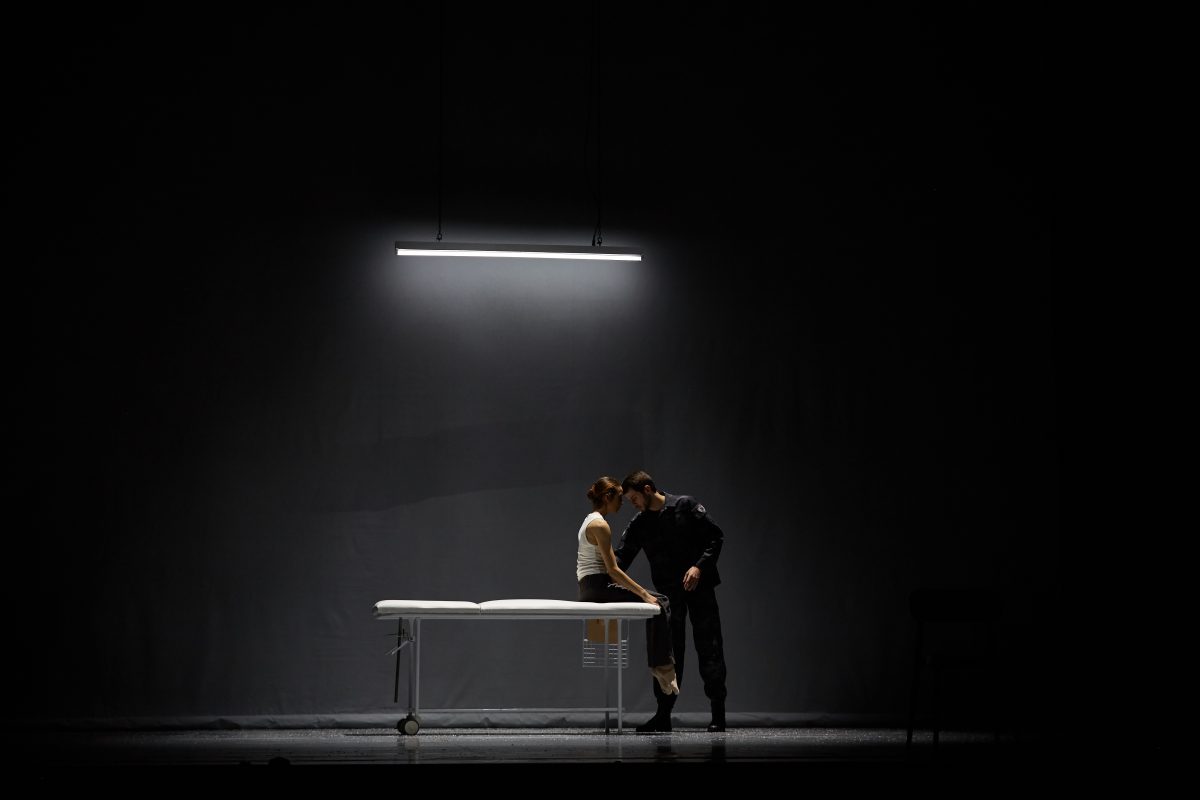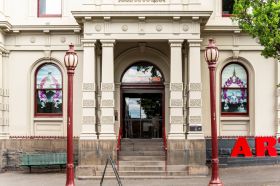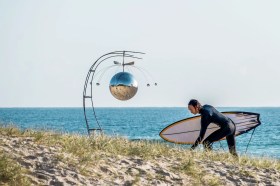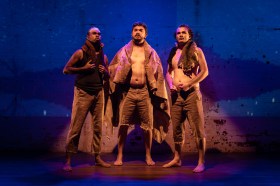The Butterfly Effect – quick links
The world premiere of WA Ballet’s Butterfly Effect opened to a standing ovation. From the first glimpse of the initial sunrise to the fading glow of the final sunset, this narrative ballet is visually-captivating, emotionally engaging and profoundly thoughtful.
Choreographer Alice Topp’s modern reimagining of Madama Butterfly diverges from both written and operatic incarnations, replacing victimhood with agency, and futility with hope. Transformation is the most overt theme, closely followed by connection, but it is the interplay of the two that gives the story its complexity.
The transformative undercurrent doesn’t just apply to the characters and plot, but equally to Topp’s dismantling and reconstructing of the original source material.
Butterfly Effect: choreography
The dramatic ability of the dancers is evident in the emotive execution of Topp’s choreography, but also resides outside of it. The dancers’ whole-hearted embodiment of their characters hold both power and nuance, conveyed intangibly through expressive inhabitation as much as through technical prowess.
The audience witnesses Charlie (performed by Alexa Tuzil on opening night) transitioning through the seasons of her life as ripples of impact flow through her choices, relationships, and circumstances. Marriage, motherhood, work, conflict, trauma, healing and internal metamorphosis are explored through the language of dance, subverting traditional ballet roles in favour of a female protagonist with complex desires and vulnerable strength.
The majority of Act I centres the relationship between Charlie and Jordan (Juan Carlos Osma). Tuzil and Osma shine in their roles, moving-as-one in ways that would not be possible without the other, beautifully conveying the mutual trust and support inherent to their early dynamic.
A playful fluidity of conjoined motion combines with an acute awareness of shape to concretise the intimacy, peace, and interdependence of their shared life. Jordan uplifts Charlie, and she spins his world. The sheer skill of Tuzil and Osma are as captivating as the story itself, as they breathe expressive life into their respective characters.
The wedding scene pulsates with heart, and vibrates dynamism through layered choreography, and a novel use of chairs. Indiana Scott and Heath Kolka stand out as the couple’s closest friends, Katie and Ben. These connected couples dance their dynamics into the minds of their enraptured audience.
A post-wedding pas de deux sees Tuzil and Osma performing fewer lifts than in the previous scenes, as a heavier gravity pulls on the pair with a subtle – but palpable – underlying entropy.
Butterfly Effect: traumas of war
Towards the end of Act II, Jordan attempts to pull Charlie back into his orbit, but the traumas of war and separation have taken their emotional toll. While much of the choreography here mirrors earlier movements, the delivery, music, and lighting tells a very different story; just one of many ways in which this ballet uses contrast, juxtaposition and mirroring to heighten narrative impact and amplify emotional resonance.

Particularly powerful moments include a solo, in which Tuzil physicalises Charlie’s transition into transformation, and multiple scenes in which militant slaps, claps, and stomps augment the musicality of the score and intensity of tonal shifts.
Jessica Wells’ unique adaptation of Giacomo Puccini’s Madama Butterfly score encapsulates mood, solidifies setting, and underlines plot beats with skilful aplomb. Sans operatic vocals, Wells merges Puccini’s motifs and melodies with her original composition to create an emotive landscape for the characters to inhabit. Principal Conductor Jessica Gethin and West Australian Symphony Orchestra are superb in weaving together Wells’ heady aural tapestry.
Butterfly Effect: peaceful intimacy
Act I opens to a soundscape of birdsong, thunder, and fluttering notes, immersing the audience in a natural paradise, even before the curtains rise. Throughout most of Act I, peaceful intimacy and joyous connection are conveyed through an ethereally emotive combination of music and movement.
The foreboding score of Act II is as much part of the setting as the ruins and falling ash, or the hive-minded soldiers linked by purpose and position. Tense brass and marching percussion create a cacophony of anxiety, punctuated by gunshots and the sound of breaking glass.
Jon Buswell merges set and lighting design with skilful symbiosis. The spaces he creates simultaneously glue the story together and pick it apart, powerfully potent in demonstrating the juxtaposition between the contrasts of Charlie’s life.
A post-conflict hospital bed beneath cold fluorescent bar-lighting contrasts sharply with the warm glow of a family home, where Charlie’s husband and child are awaiting her return. Emotionally complex scenes are communicated beautifully through artful set design and evocative lighting, without ever diluting the sublime horrors of war, or downplaying jubilant expressions of love.
Butterfly Effect: Australian backdrop
The distinctly Australian backdrop and life-sized gum tree of Act I contrasts with Act II’s silhouetted, war-torn city; poignantly highlighted by a strategically-positioned decapitated tree. Later, a flaming tree and its falling leaves witness Charlie dance herself into a state of reunification, as a red sun sets on this season of her life.

These contrast-heavy scenes provide excellent aesthetic examples of the dynamic interplay between set design, lighting, costume, score, and choreography at the core of this brilliant production.
Aleisa Jelbart’s costume design utilises fabric, shape, and versatility to convey character while enhancing dancer’s movements. Her costumes augment every scene without unduly distracting the audience. Using palette to direct focus, her designs complement – and almost inhabit – the scenery, especially during the wedding.
WA Ballet’s Butterfly Effect weaves bodies and stories together through an impactful mix of contemporary dance and classical ballet. This expressive, thoughtful and emotionally charged production is more than a reimagining of Madama Butterfly; it’s a masterful work of art unto itself.






